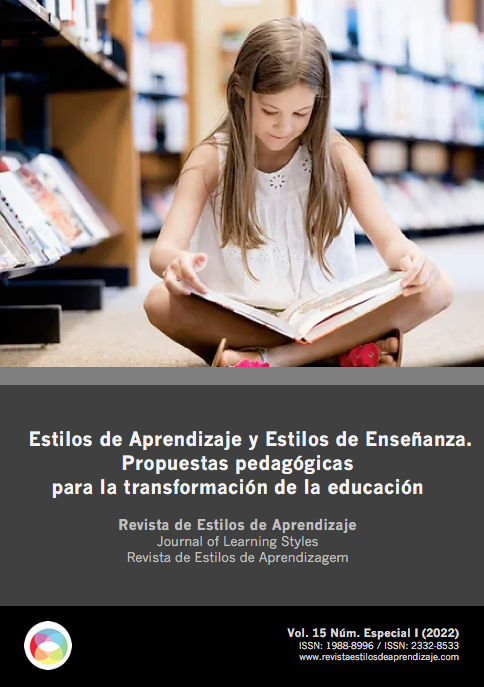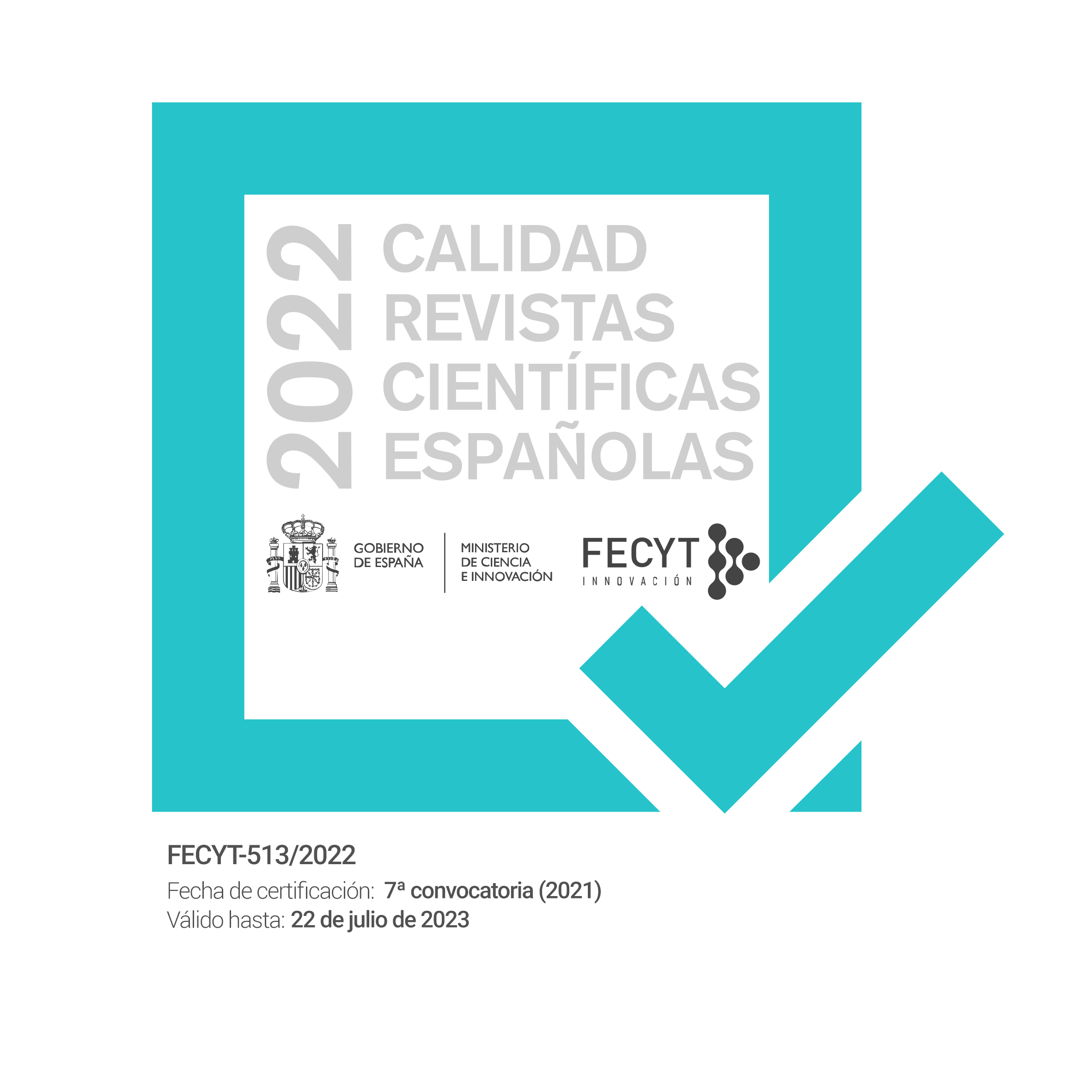Relationship between the learning styles of university students of Physical Education and their memories of the teaching styles used by their teachers
DOI:
https://doi.org/10.55777/rea.v15iEspecial.4580Keywords:
learning styles, spectrum of teaching styles, Physical educationAbstract
The cognitive profiles that students present could condition the memory towards the teaching styles that their teachers used in Physical Education classes. Therefore, this research try to analyze the relationship between the learning styles of university students of Physical Education and their memories of the teaching styles used by their teachers. For this, a quantitative descriptive and cross-sectional research has been carried out through the survey. A total of 56 university students of the Physical Activity and Sports Science degree, 32,1% women y 67,9% men, average age 21,77 years old. The instruments used have been CHAEA questionnaire and the physical education students’ experience and perceptions of the spectrum of teaching styles questionnaire. All students, independently of their learning styles, remember that their teachers use more command and practice and less self-teaching. Although, teorical students remember that learner-initiated style was the least use by their teachers.
Downloads
References
Alemdağ, C., Alemdağ, S. & Özkara, A. B. (2018). The analysis of sports high school students’ learning styles in terms of overall academic success. Education and Science, 43(195), 269–278. https://doi.org/10.15390/EB.2018.7327
Alemdağ, C. (2020). Changes in Learning Style Preferences of Physical Education Students, Center for Educational Policy Studies Journal, 10(4), 207-220. http://doi.org/10.26529/cepsj.613
Alonso, C., Gallego, D., & Honey, P. (1994). Los Estilos de Aprendizaje: Procedimientos de diagnóstico y mejora. Ediciones mensajero.
Alonso, C. M., Gallego, D. J., & Honey, P. (1997). Los estilos de aprendizaje: procedimientos de diagnóstico y mejora. Mensajero.
Alonso, C., Gallego, D. & Honey, P. (2012). Los estilos de aprendizaje. Procedimientos de Diagnóstico y Mejora. Mensajero.
Blázquez, D. (2017). Métodos de enseñanza en Educación Física. Enfoques innovadores para la enseñanza de competencias. INDE
Chetty,N.D.S., Handayani, L., Sahabudin, N.A.B., Ali, Z., Hamzah, N. & Kasim, S. (2019). Learning styles and teaching styles determine students’ academic performances. International Journal of Evaluation and Research in Education (IJERE), 8(3), 610-615. http://doi.org/10.11591/ijere.v8i4.20345
Cothran, D.J., Kulinna, P.A., & Ward, E. (2000). Students’ experiences with and perceptions of teaching styles. Journal of Research and Development in Education, 33, 93–102
Espada, M. (2020). Influencia del estilo de aprendizaje del alumnado en las preferencias de los estilos de enseñanza en educación física. En J. J. Gázquez et al. (Eds). Investigación en el ámbito escolar. Nuevas realidades en un acercamiento multidimensional a las variables psicológicas y educativas, (pp. 977-990). Dykinson.
Espada, M., Fernández, M. & Calero, J.C. (2019). Validación de la versión española del cuestionario de uso y percepción del espectro de estilos de enseñanza en educación física. Revista Mexicana de Investigación Educativa, 24(80),271-285
Espada, M., Fernández, M. & Calero, J.C. (2021). Validación Española del cuestionario experiencia y percepción de los estudiantes del espectro de estilos de enseñanza en Educación Física. Journal of Sport and Health Research. 13(2), 305-318.
Espada, M., & Pineño, P. J. (2020). Identificación de los estilos de enseñanza preferidos por los docentes de Educación Física en Educación Secundaria. Revista De Estilos De Aprendizaje, 13(25), 167–182. https://doi.org/10.55777/rea.v13i25.1525
Fernández, M. & Espada, M. (2015). Frecuencia de utilización y aceptación de estilos de enseñanza en educación física. ATHLOS. Revista Internacional de Ciencias Sociales de la Actividad Física, el Juego y el Deporte, 9.
Fernández, M. & Espada, M. (2017). Formación inicial y percepción del profesorado sobre los estilos de enseñanza en Educación Física. Retos: Nuevas Tendencias en Educación Física, Deporte y Recreación, 31, 69-75. https://doi.org/10.47197/retos.v0i31.49024
Huéscar, E., Moreno-Murcia, J.A. & Alias, A. (2017). Diseño y validación de una escala para medir el estilo controlador del estudiante de Educación Superior. Psychology, Society, & Education, 9(2), 239-249. https://doi.org/10.25115/psye.v9i2.696
Jiménez, V. (2021). The predominant Learning Style in Physical Education students in secondary education and in the degree in Physical Activity and Sports Sciences: an empirical foundation for an emerging pedagogical method. Revista de Estilos de Aprendizaje, 14(28), 205-217. https://doi.org/10.55777/rea.v14i28.3260
Kharb, P., Paramita, P., Jindal, M. & Singh, V. (2013). The Learning Styles and the Preferred Teaching–Learning Strategies of First Year Medical Students. Journal of Clinical and Diagnostic Research, 7(6), 1089-1092. https://doi.org/10.7860/JCDR/2013/5809.3090
Kulinna, P. H. & Cothran, D. J. (2003). Physical education teachers’ self-reported use and perceptions of various teaching styles, Learning and Instruction, 13(6), 597-609.
Martínez, I., Renés, P. & Martínez, P. (2019). Los Estilos de Aprendizaje y de Enseñanza: análisis y diagnóstico en Educación Superior de Centro Internacional de Estudios Superiores del Español, CIESE-Comillas, España, Revista de Estilos de Aprendizaje, 12(24), 28-41. https://doi.org/10.55777/rea.v12i24.1317
Merino-Barrero, J.A., Valero-Valenzuela, A. & Moreno-Murcia, J.A. (2017). Análisis psicométrico del cuestionario estilos de enseñanza en educación física (EEEF)/ Psychometric Analysis of the Teaching Styles Survey in Physical Education (TSPE). Revista Internacional de Medicina y Ciencias de la Actividad Física y el Deporte, 17 (66), 225-241. https://doi.org/10.15366/rimcafd2017.66.002
Montaluisa-Vivas, Á., Salas-Jaramillo, E. & Garcés-Cobos, L. (2019). Los estilos de aprendizaje según Honey y Mumford y su relación con las estrategias didácticas para Matemáticas. REIRE Revista d’Innovació i Recerca en Educació, 12(2), 1–16. http://doi.org/10.1344/reire2019.12.222233
Mosston, M. (1978). La enseñanza de la educación física. Paidós
Mosston, M., & Ashworth, S. (2002). La enseñanza de la Educación Física. La reforma de los estilos de enseñanza. (4a ed.). Hispano Europea, S.A.
Mosston, M. & Ashworth, S. (2008). Teaching physical education. Spectrum Teaching and Learning Institute.
Nájera, R.J., Nuñez., O. Candia, R., López, S.J., Islas, S.A. & Guedea, J.C. (2020). ‘How is my teaching?’ teaching styles among Mexican physical education teachers. Movimento, 26, 1-13. https://doi.org/10.22456/1982-8918.99495
Real Decreto 217/2022, de 29 de marzo, por el que se establece la ordenación y las enseñanzas mínimas de la Educación Secundaria Obligatoria. Boletín Oficial del Estado, 76, de 30 de marzo del 2022.
Romanelli, F., Bird, E. & Ryan, M. (2009). Learning Styles: A Review of Theory, Application, and Best Practices, American Journal of Pharmaceutical Education, 73(1), 1-5.
Van der Lingen, E., Willy, B. & Beate. I. (2020). The relationship between entrepreneurial experience and preferred learning styles, Education + Training, 62(7/8), 863-876. https://doi.org/10.1108/ET-11-2019-0263

Downloads
Published
How to Cite
Issue
Section
License
By submitting the original, the author(s) declare that they are aware of and accept, in full, the privacy policy as well as the copyright of the Learning Styles Magazine.
The Learning Styles Magazine offers free and open access to its content, completely free of charge, in order to bring scientific research to its readers and society in general. All digital contents are free and open access and are published under a Creative Commons license:

Rights are granted under the Creative Commons Reconocimiento-NoComercial-SinObraDerivada 4.0 Internacional (CC-BY-NC-ND 4.0)
The Learning Styles Magazine is an open access journal. Publication of articles or reviews in the Journal does not entitle you to any remuneration. For authors as well as readers, the journal is free Creative Commons Reconocimiento-NoComercial-SinObraDerivada 4.0 Internacional (CC-BY-NC-ND 4.0).
With this licence, the reproduction and dissemination of the contents of the magazine for educational, social and knowledge transmission purposes is permitted, without any profit motive in mind, provided that the source and authorship are not modified. The licence granted to Learning Styles Magazine allows the copying and distribution of the magazine's contents, as long as the authorship of the work is recognised, correctly specifying the author and the publishing entity. The work may not be used for commercial purposes, nor may it be altered, transformed or generated from this work.
The publication of articles or reviews in the Journal does not give the right to any remuneration.
The Learning Styles Journal invites the author/authors to increase the visibility and scope of their articles published by re-disseminating them in:
- Web spaces and personal networks, as well as in scientific meetings and forums
- Open institutional archives in Universities, educational repositories and Research Centres.
- Academic and scientific networks (Researchgate, Academia.edu, Plubons, etc.)
All these spaces and publications must include all the bibliographic data of the publication.
























